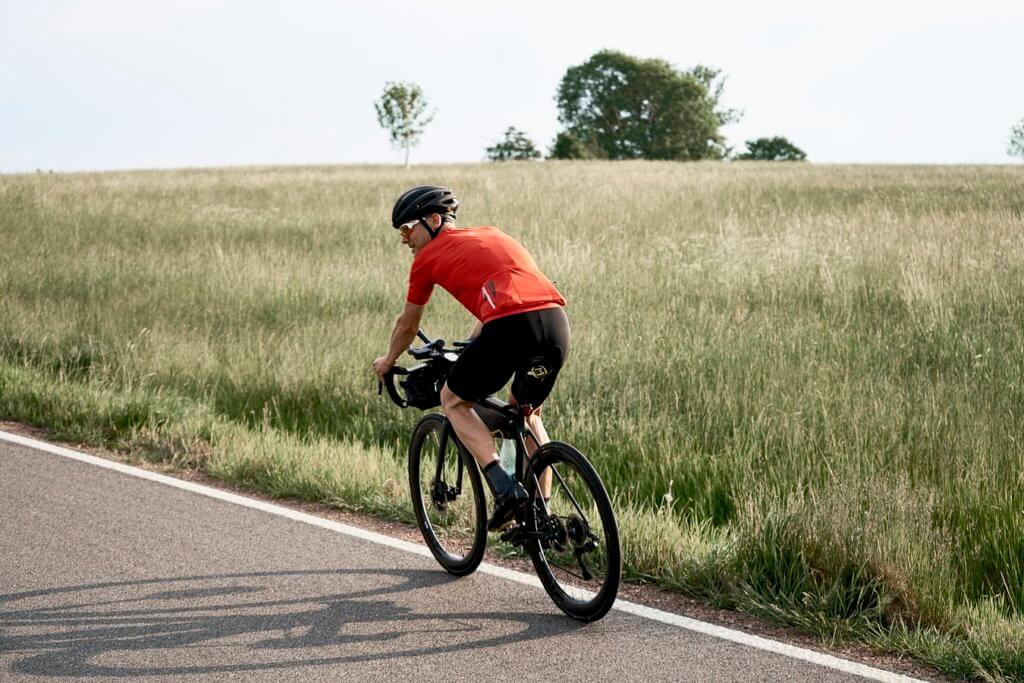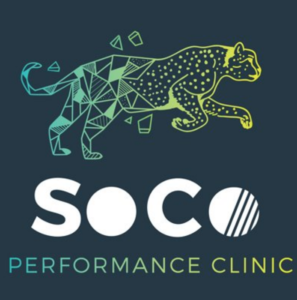Endurance events can take their toll on our bodies. Whether you are a cyclist, runner, hiker or triathlete, you can end up feeling a little worse for wear after a long event. However, it is possible to prevent injury by taking a few simple measures. Here Conor Gavin from SoCo Performance, tells us how to best look after our bodies when we start to up the ante.
Endurance events – the clue is in the name … the ability to endure! Whether it be a triathlon/Ironman, trekking trip, adventure race, Enduro Mountain-Biking race etc., it is often your ability to endure physical and mental pain over a more extended period of time that determines how you get on. From an injury point of view, the vast majority of injuries we see with the above events relate to loading and the body’s capacity to tolerate it over a time (both in training and in the events themselves). Acute traumatic injuries, while they can happen and we do see them, are in the minority for endurance events. Much more common is the athlete presenting with a failed response to load issue – i.e. an ‘overuse’ injury.
Common injuries seen in endurance events include achilles pain, anterior knee pain, calf strains, lower back pain, and heel pain.
These issues are all influenced by a combination of intrinsic (internal) and extrinsic (external) factors. Some sample intrinsic factors include decreased muscle strength, poor landing mechanics (i.e. your lower limb position on landing when running, downhill hiking, etc.), reduced joint awareness (proprioception) and reduced available joint range of motion. Sample extrinsic factors include an acute increase in load (i.e. training or race day volume), poor surface (e.g. smooth vs rocky terrain) and problems with equipment (e.g. footwear, poor bike-fit, hiking rucksack fit).
Our job in SoCo involves addressing both the intrinsic and extrinsic factors both from a prevention and cure point of view. For example, if a runner or hiker comes with anterior knee pain largely because of a hip stability deficit, their recovery would be delayed if they continued with a large amount of downhill running or hiking (as this will place an increased load on the anterior aspect of the knee). In this instance, a more rounded management plan, looking at intrinsic and extrinsic factors, would be required to fix the issue as comprehensively and quickly as possible.
With all of this in mind, we’ve created a list of some ways to try stay as injury-free as possible when competing in endurance events! Most of these are simple changes to your training routine that can be introduced independently, whereas some are slightly more technical and need to be implemented under the instruction of a qualified Sports Physio or Strength & Conditioning expert.

1. Address Posterior Chain Strength Deficits
This is one of the biggest causes of injury in all sport/exercise, not just in endurance events! Increasing amounts of time spent at desks often leads to a reduction in posterior chain (lumbar spine paraspinals, glutes, hamstrings, calf muscles) strength. This reduction leads to an asymmetry between the posterior and anterior (abdominals, hip flexors, quads) chains, meaning some areas get injured because they are overloaded, and other areas get injured because they are under-loaded and unable to tolerate a sudden increase in load. An individualised strength & conditioning or rehab programme biased towards posterior chain strength is how this is often resolved. Further assessment is usually required to ascertain how much if any of a deficit is present in an individual.
2. Reduce Calf Strength Deficits
A huge one for anyone involved in any form of running… so nearly everyone! The soleus is one of the muscles that make up the ‘calf’ muscle complex and is very commonly weak. This weakness is a primary factor in calf strains and so any strength & conditioning or rehab programme for runners must include soleus-specific exercises. Samples of these can be found online, on our YouTube page where you’ll see some basic and progressed soleus-strengthening exercises.
3. Improve Single Leg Control
Your control on one leg is crucial for staying injury-free, as poor mechanics here lead to overloading structures past the point to which they can adapt and repair themselves, and ultimately lead to tissue failure and injury. Poor single leg mechanics can often be attributed to hip stability deficits. Therefore, exercises targeting lateral hip strength (e.g. gluteus medius exercises), as well as overall single leg strength and control (e.g. single leg RDL, single leg balance on a Bosu ball) would be very important components of any strength & conditioning or rehab programme if you think you have an issue with single leg control.
4. Reduce Thoracic Spine Stiffness
The bulk of your trunk movement comes from your thoracic (mid-back) spine; however, this movement can be inhibited with a stiff thoracic spine (again common for those in desk jobs due to a higher volume of sitting), which throws the onus on movement generation to other areas not designed to produce such movement (the most common example being the lower back). Improving your thoracic spine mobility through regular foam rolling and thoracic spine mobility exercises will go a long way to preventing lower back issues!

5. Address Extrinsic Factors
As mentioned earlier, extrinsic factors can play a large role in causing injury in endurance events. These extrinsic factors cause tissues to endure loads over and above their thresholds for adaption, leading to tissue failure and injury. One of the more common extrinsic factors we see is a poor bike set-up leading to neck, lower back or anterior knee pain. A correct bike set-up really is crucial to staying injury-free if you’re involved in a cycling sport. Other extrinsic factors to be aware of and address include poor footwear in running and hiking, and lack of variation in training surfaces – e.g. excessive training on unstable surfaces, or running the same route over and over on a road with a specific camber!
6. Improve Recovery Strategies
A common example of this is in overloaded tight quads from cycling. Such an overload will again eventually lead to a load accumulation past the point at which the muscle tissue can adapt and ultimately end in injury. Correct recovery incorporates many disciplines and the most effective recovery will include as many of these disciplines as possible – for example, correct nutrition and hydration, adequate sleep, basic strength and conditioning strategies such as a proper cool down, contrast therapy, compression garments, etc., and completion of any prescribed pre- or post-event/training rehab exercises if dealing with an existing injury.
7. Improve Jump/Land Strategies
You jump and land every time you take a stride in running, and also to a lesser extent in walking (although some downhill hiking can deliver even greater landing forces to the lower limbs). Therefore, your ability to jump and land correctly will play a massive role in keeping injury at bay. Progressive double and single leg drop jumps are a great way to develop and reinforce correct technique. A good strength and conditioning programme will allow you to progress these strategies to incorporate more difficult jumping exercises also. Technique is crucial in these exercises!
8. Address Any Other Holes in your Preparation
We see athletes in our Clinic who tick all of the above boxes, but who still suffer injury. Examples of this include poor nutritional strategies inhibiting recovery and leading to injury, low energy levels (from a non-musculoskeletal cause) preventing achievement of training goals leading to a higher risk of injury on race-day, or poor psychological strategies leading to trouble adhering to a rehabilitation or training routine which leads to subsequent overload issues and injury. If any of these (or other issues) apply to you, then you should look to address them, as they can not only hamper progress in recovery or performance but lead to injury in their own right if significant enough an issue.
So there you have it, a quick whistle-stop tour of some of the more common issues we see in those competing in Endurance events, and some basic recommendations to help keep you off the physio treatment table and outside enjoying your sport! As with any of these articles, be cautious when adding any new exercises to a training or rehab routine. If you’re unsure of anything, it’s always best to check with your physio or qualified medical professional. The above recommendations are tailored to endurance events but a lot of principles apply equally well to other sports and forms of exercise. See how you go with them and if you have any questions, just give us a shout on 01 293 2819, or by email on [email protected].
Happy enduring!
Brought to you by:

Check out our Hard as Nails podcast:
Like this? Check out these other articles:












Pingback: 7 Stretches to Help Relieve Lower Back Pain | Outsider.ie